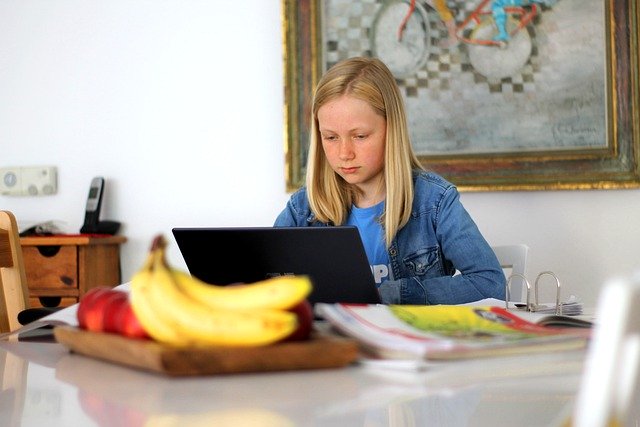It’s been a year that I don’t think anyone will be forgetting in a hurry. In my 26 years working in education, including my 4 years training, I have never experienced anything like it. As such am hoping my review of 2020 might be something I find myself looking back on at some point in the future. 2020, the year with the pandemic.
The year started of normally with January including the usual BETT event that I briefly attended, plus an EdTech conversations event which I had the privilege to speak at. I must admit I enjoyed the EdTech conversations event in particular, with my visit to BETT a little bit rushed plus, to be honest, I now find BETT to be similar year to year and lacking in any new ideas. Obviously, my journey to London had its usual missteps and calamities as seem to regularly befall me when I travel by train. This almost goes without saying.
In March I found myself in Birmingham speaking at the Digifest event. This was an excellent event with the signs of the pandemic just starting to show in hand sanitising stations and the lack of the usual handshake welcomes at the conference. Will admit my presentation was far from my best however overall, I found the event to be both useful and interesting.This is definitely an event I would like to revisit.
As we approached the half term, in school, we had to accelerate our training and support for staff in relation to using Microsoft Teams as it became likely that schools would be forced to close. Teams had been identified as the key tool in continuing to support learning during lockdown, allowing resources to be shared but also supporting synchronous lessons. Thankfully we had already started using Teams mainly in an administrative capacity for teaching and support departments, so we already had some training resources plus understanding as to how to use Teams. For me personally, it made me glad that I had been pushing for moving to the cloud and to Office 365, as it put us in a position to quickly move to online teaching when the lockdown kicked in. It does make me believe, in education, we need to be braver about our decision making and pursuing what we believe to be the right direction. Too often decisions are overthought and overanalysed to the point that no action, and therefore no progress is made. Yes, education is important, yes we want to avoid making the wrong decisions, but if 2020 has proven anything it has proven we cannot predict the future, so we therefore need to braver and avoid being paralysed or slow to progress, and focussing too much on predicting and planning in minute detail in an unpredictable world. Only then can we provide students with the skills, the knowledge and the character traits needed for the future.
And in late March the lockdown did just that, kicking in, and forcing a move to online teaching and to remote working. It was strange finding myself at home day in day out, working from my PC with the only social contact outside of the family being via Teams video calls. This period highlighted that working from home was possible and even beneficial in some situations, however also highlighted that equally face to face interactions are beneficial and even required in other situations. From a teaching point of view, I still believe face to face is the best way to deliver teaching and learning, however that this can be augmented and supported through the use of technology, online teaching and online learning. Its about finding a balance.
The period from March to August was hard, as we ran with a reduced IT Services department, supporting teachers delivering online teaching largely from their own homes. It was made harder by the lack of the social interaction which would normally occur in our office, where members of the team would support and encourage each other, and occasionally have a laugh. Remote working didn’t quite provide for this and it made everything feel that much more difficult and draining. Additionally, working at home without driving too and from work led to the distinction between being at home or at work, being eroded. This led to work bleeding into home time, and also a difficulty for me in turning off in the evenings and on taking time for myself and for family. Will be honest and say I previously have always struggled with turning it off, however the pandemic and working from home only amplified this issue.
August was meant to see our long-awaited family trip to the US, something we had wanted to do for a large number of years and something we had finally booked to prevent us once again missing out. Sadly, despite booking and making the plan concrete, Covid19 had other ideas and the trip never happened. This was a big disappointment.
September saw the launch of the new academic year and getting students back on site but where there would be occasions where some students would be attending lessons online. This was the birth of the “hybrid” lesson. For me this was also a return to more regular teaching as I took on a couple of year 9 classes in addition to my lower 6 sessions. September as the start of new academic year is often a very busy period but this year it was significantly busier and more challenging.
During September I would receive an unexpected offer in relation to a new job role. It would be weeks and weeks of exploring the options, of stress, of will we or wont we as the opportunity would have once again taken me and my family abroad. The idea of a return to expat life was definitely appealing however the context of a global pandemic was far from ideal. This was one of the most difficult decisions I feel I have had to make in recent years however having considered my family I eventually decided the option in hand was a great option however sadly presented itself at the wrong time. It is interesting, when looking back to my pledges at the start of 2020, I mentioned seeking a new challenge and this would certainly have been it; Sadly this therefore was the right opportunity but clearly at the wrong time.
September also saw me undertake a challenge to complete 100km of running within the month as part of an online group. Must admit am really happy with myself for managing to complete this challenge as it meant running 5 or 6 days within each week. This was way more in terms of health and fitness than I had achieved before so I am very proud to have been able to stick at and complete the target. Sadly, I then let things slip in October and November however I again started to run in December and hope to build up once again into 2021.
October saw me come down with a cough and temperature which instantly got me worried re: covid19. Thankfully the NHS testing service was excellent and I quickly got a test and my results back, indicating a negative; It was a common cold rather than the corona virus. It still took it out of me and led to a couple of days off ill. I suspect the stress of the job offer and the cold/wet mornings running throughout September all played their part in me coming down with a cold and my resultant lack of energy.
As we progressed into November and December I was involved in an esports project to try and launch an interschools competition among independent schools like ours. Its all in its infancy at this point, with a small number of schools planning to partake in the initial pilot however am hoping that after a successful pilot in the spring term it may be possible to grow this project. Esports is something I am passionate about as there are many opportunities out there for our students, plus this area is only going to grow in the coming years.
November also saw the introduction of a puppy to the family. This was another things which had been discussed for many years but for which I was reluctant. With everything that has happened I relented and Ziva joined the family initially a shy puppy before becoming the devil dog she now is.If it can be ripped to shreds, scratched, eaten, chewed, etc, then it has been, and all while maintain a cute, butter would melt in my mouth outward appearance. Am not sure if we are training the dog or she is training us.
Christmas has now came and went and as I am my son have often reflected, it didn’t feel very Christmasy this year. I suspect this is due to the year as a whole lacking some of the normal markers of a year such as a holiday away or the clear distinction between working and being on holiday; Its not very different when your working day involves being at home all day, in the same way as your holidays, with little options available for activities due to lockdown.
2020 for me was meant to be about balance or at least that what I decided when I wrote my pledges back in January. Looking back 2020 has been anything but balanced. Its been crazy, its been frantic and ever changing. Its been some year, a year which looking back seems to have disappeared in a blur, its been the year with a pandemic in it. I suspect things will be different as we move into 2021, with some changes for the better however others less so. This is a year I don’t think I will be forgetting anytime soon.
2020, the one with the pandemic!






 I think many schools are asking themselves the above question as they look to improve on what they currently offer and as they prepare for what could be a long period where at least some students will be working remotely due to isolation resulting from Covid19 symptoms.
I think many schools are asking themselves the above question as they look to improve on what they currently offer and as they prepare for what could be a long period where at least some students will be working remotely due to isolation resulting from Covid19 symptoms.
 As we head towards the end of the Easter break and into the new term and for a lot of schools, a period of remote learning, I thought I would share my thoughts and tips on remote learning.
As we head towards the end of the Easter break and into the new term and for a lot of schools, a period of remote learning, I thought I would share my thoughts and tips on remote learning.
 For me our students online social media habits have to date been seen in a very negative light, being thought of as being anti-social or changing in their behaviour or attention spans. The last week has however shown how the online world can provide opportunities for socialising as much as the real world can, albeit in different ways. We have seen virtual pubs, lots of online Karaoke, community groups and much more form quickly online to overcome the challenges of social distancing and the potential harm of individual isolation. Thinking about children, and how parents may be overprotective and concerned of the dangers in the real world, therefore leading our students to be more isolated than they would have been in the past; For me I remember parental comments about returning home “before the street lights come on”. This kind of freedom to socialise in real life isn’t afforded in anyway to the same extent for the current generation of children. Is it therefore any wonder they would look to use the online world? I think going forward there will be a greater acceptance of the benefits of the hyper connectedness which our students already experience through the many apps they use.
For me our students online social media habits have to date been seen in a very negative light, being thought of as being anti-social or changing in their behaviour or attention spans. The last week has however shown how the online world can provide opportunities for socialising as much as the real world can, albeit in different ways. We have seen virtual pubs, lots of online Karaoke, community groups and much more form quickly online to overcome the challenges of social distancing and the potential harm of individual isolation. Thinking about children, and how parents may be overprotective and concerned of the dangers in the real world, therefore leading our students to be more isolated than they would have been in the past; For me I remember parental comments about returning home “before the street lights come on”. This kind of freedom to socialise in real life isn’t afforded in anyway to the same extent for the current generation of children. Is it therefore any wonder they would look to use the online world? I think going forward there will be a greater acceptance of the benefits of the hyper connectedness which our students already experience through the many apps they use. Although most of the above is positive I do have some concerns. I am worried that as people rushed to find solutions to overcome isolation, maintain social connection, etc, that they didn’t show due care for the protection of their personal data and for the resultant cyber risk. Great communities may have formed overnight using free services but what data did we give away regarding these groups and the individuals within them. It worries me that when things do settle down, we may realise that some decisions made have negative consequences. I suspect the pendulum which swings between individual privacy and public good, and which previously tended towards individual privacy may have shifted somewhat and may now tend more towards the public good. In some ways this may be a good thing, but what may be a good thing in a crisis may not be a good thing when everything returns to normality or near normality.
Although most of the above is positive I do have some concerns. I am worried that as people rushed to find solutions to overcome isolation, maintain social connection, etc, that they didn’t show due care for the protection of their personal data and for the resultant cyber risk. Great communities may have formed overnight using free services but what data did we give away regarding these groups and the individuals within them. It worries me that when things do settle down, we may realise that some decisions made have negative consequences. I suspect the pendulum which swings between individual privacy and public good, and which previously tended towards individual privacy may have shifted somewhat and may now tend more towards the public good. In some ways this may be a good thing, but what may be a good thing in a crisis may not be a good thing when everything returns to normality or near normality.